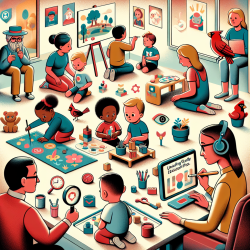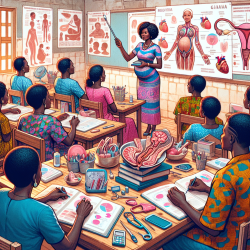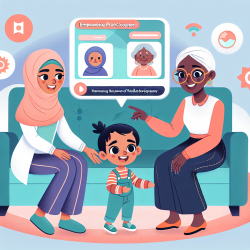As a Special Education Director with an extensive background in supporting diverse learners, I am continually on the lookout for resources that can enhance our educational practices, particularly in the realm of speech and language development. It is with great enthusiasm that I delve into the practical applications of "Picture Pairs" and "More Picture Pairs" in speech-language therapy, drawing upon the insights shared in the research article titled "Picture Pairs More Picture Pairs."
Phonological processes are patterns of sound errors that typically developing children use to simplify speech as they learn to talk. These processes are expected to disappear by a certain age, but when they persist, they can indicate a phonological disorder. This is where targeted interventions, such as those offered by "Picture Pairs" and "More Picture Pairs," become invaluable.
Understanding the Tools
"Picture Pairs" is a compact kit designed to facilitate the treatment of common phonological processes through the use of minimal pair picture cards. Its goal is to provide practice in recognition, identification, and verbalization of minimal word pairs, focusing on cluster reduction, liquid simplification, and prevocalic voicing. This tool is primarily aimed at preschool and young school-age children, making it a versatile addition to any speech-language pathologist's toolkit.
"More Picture Pairs" expands upon the original by offering a larger variety of picture cards and activities for remediation of phonological processes. It supports a language-based approach, a sound-based approach, or traditional articulation therapy, making it a comprehensive resource for addressing a wide range of phonological disorders. This kit includes an instructional manual, over a thousand picture cards, posters, reproducible worksheets, and games, catering to children between the ages of three and eight years.
Practical Applications in Therapy
The practical applications of these tools in speech-language therapy are manifold. Here are several strategies for incorporating "Picture Pairs" and "More Picture Pairs" into therapeutic practices:
- Targeted Phonological Process Intervention: Utilize the kits to specifically target phonological processes that are problematic for the child. For example, if a child struggles with final consonant deletion, the therapist can use relevant picture pairs to focus on this process.
- Engagement Through Games: The inclusion of games and activities in "More Picture Pairs" makes therapy sessions more engaging for children. Therapists can use these games to reinforce learning in a fun and interactive way.
- Parent and Caregiver Involvement: Educate parents and caregivers on how to use the picture cards at home. This not only reinforces learning but also ensures that therapy extends beyond the clinical setting.
- Group Therapy Sessions: The versatility of the picture cards allows for their use in group therapy settings, where children can learn from each other's successes and challenges.
- Customization and Flexibility: The wide range of processes covered by the kits offers therapists the flexibility to tailor sessions to the specific needs of each child, promoting more personalized and effective therapy.
Benefits of Using "Picture Pairs" and "More Picture Pairs"
The benefits of integrating "Picture Pairs" and "More Picture Pairs" into speech-language therapy are significant:
- Enhanced Learning: Visual aids can significantly enhance learning, especially for young children. These tools provide clear, colorful representations of minimal pairs that can help solidify understanding.
- Increased Engagement: The interactive nature of the games and activities increases children's engagement and motivation, making therapy sessions more enjoyable and effective.
- Improved Outcomes: By focusing on specific phonological processes and providing repeated, targeted practice, these tools can lead to improved speech outcomes for children.
- Resource Efficiency: The comprehensive nature of the kits makes them a cost-effective resource for therapists, schools, and parents, reducing the need for multiple separate tools.
Conclusion
The "Picture Pairs" and "More Picture Pairs" kits represent invaluable resources for speech-language pathologists, educators, and parents alike. By providing a structured, engaging way to address phonological processes, these tools can play a crucial role in enhancing speech and language outcomes for children. As we continue to seek out effective interventions for our students, incorporating evidence-based resources like these into our practice is essential for fostering communication skills and confidence in young learners.
To explore the foundational research that supports the development and application of these tools, I encourage you to read the original research paper. For further insights and detailed information, please follow this link: Picture Pairs More Picture Pairs.










